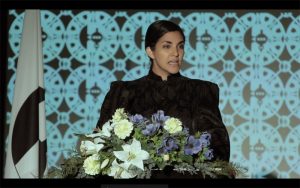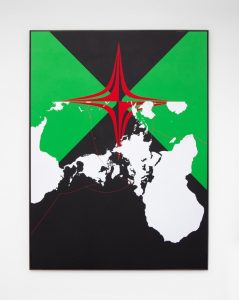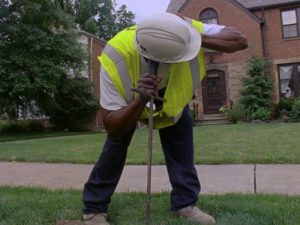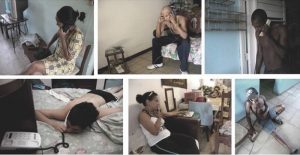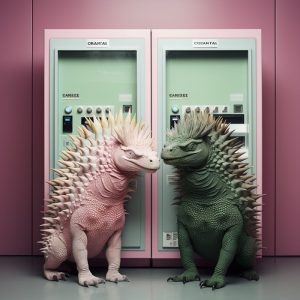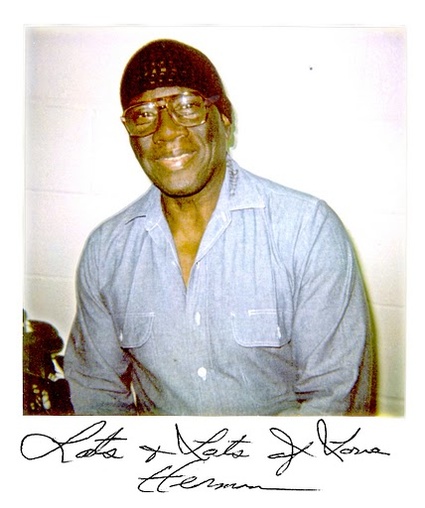 Portrait via critical spatial practice
Portrait via critical spatial practice
Herman Joshua Wallace has spent the past 38 years in Solitary Confinement (or closed cell restriction) in Louisiana’s State Prison System. For a minimum of 23 hours a day, he is shut up in a six-foot-by-nine-foot (2m x 3m) cell. It is very likely that Wallace didn’t commit the crime he has been sentenced for.
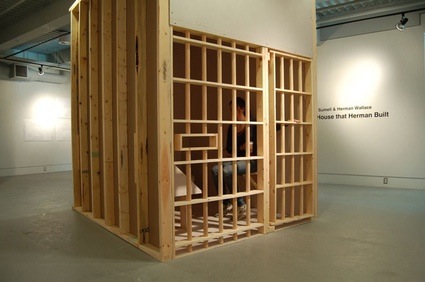 A wooden cell based on Wallace’s solitary confinement cell. As exhibited at Alternator Gallery, Kelowna BC, April 2008
A wooden cell based on Wallace’s solitary confinement cell. As exhibited at Alternator Gallery, Kelowna BC, April 2008
Along with Robert Hillary King and Albert Woodfox, Wallace is part of The Angola 3. It is believed that the men were framed for trying to speak out against inhumane treatment and racial segregation on the prison. Using non-violent protests, they were trying to draw attention to the corruption, discrimination and abuse reigning in the biggest prison in the US, Angola, an 18,000 acre former slave plantation which got its name from the country most of the slaves traveled from. On a page listing a few facts about the prison, one learns that every physically able prisoner (78% of whom are black) is required to work for 4 to 20 cents an hour a minimum of 40 hours a week. Inmates work fields of sugar cane, soybeans, cotton and corn, they also look after a 1,500 cattle beef herd. They even built a 11,300 seat arena which houses the annual Angola Prison Rodeo. The Louisiana’s State Prison provides more jobs than the local nuclear power plant and paper mill combined. Even more surprising, Angola boosts a Prison View Golf Course on its grounds.
Wallace was originally imprisoned for robbery but he, Woodfox and King (who was freed in 2001) have been confined to solitary after being convicted of stabbing to death prison guard Brent Miller in 1972 during their protests. The circumstances of their trial was so suspect that there are no doubts among their supporters that the men are innocent. Even the victim’s widow, Teenie Verret, doesn’t believe in their guilt.
Trailer of the documentary In The Land Of The Free
In 2003 artist Jackie Sumell contacted Herman Wallace and asked him: “What kind of house does a man who has lived in a 6′ X 9′ box for over 30 years dream of?”
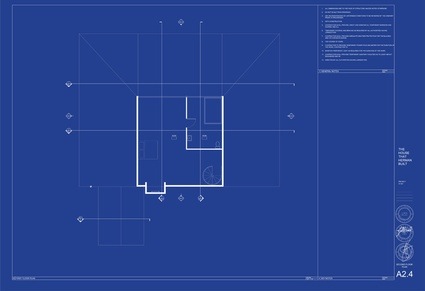 Blueprints (credits: Maison Orion of Los Angeles) of the house that Wallace imagined for himself while in solitary confinement
Blueprints (credits: Maison Orion of Los Angeles) of the house that Wallace imagined for himself while in solitary confinement
I discovered their project, The House That Herman Built, during a presentation the artist gave a few weeks ago at the International Design Biennial in Saint-Etienne, France. Through exchanges of hundreds of letters, phone calls, and numerous visits to the prison, Wallace and Sumell have been sketching and designing the dream house together.
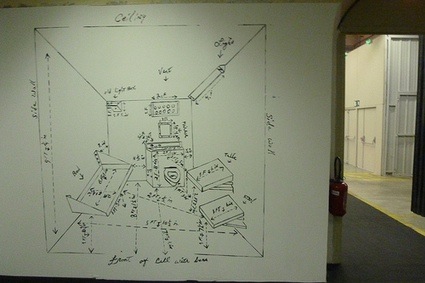
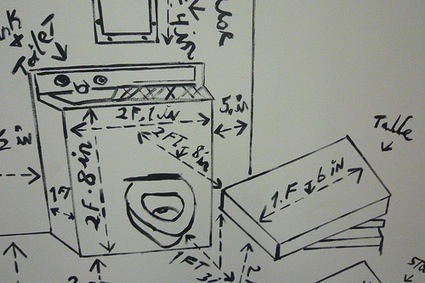 Sketches of Wallace’s cell as exhibited earlier this month at the International Design Biennial in Saint-Etienne
Sketches of Wallace’s cell as exhibited earlier this month at the International Design Biennial in Saint-Etienne
The construction of the house is currently being funded by a network of activists, artists, architects and other concerned individuals.
Hopefully, the House will one day be a place for Herman Wallace and Albert Woodfox to comfortably retire. But until Herman is able to win his legal battle, the house will be maintained by a network of volunteers.
Practically Herman has asked that the house be used as a community space that is committed to youth education and drug prevention. The house is design to be a open space that encourages the exchange of ideas, art and activism- a space to live and dream, and for anyone to visit.
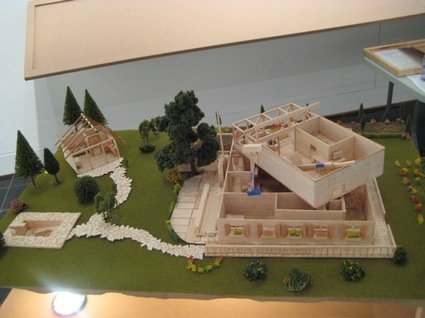 Model by Jackie Sumell, 2003-2008
Model by Jackie Sumell, 2003-2008
Jackie Sumell’s objective with this project is not only to bring Herman Wallace’s story to the public attention but also to raise awareness about oppression, institutionalized racism and injustice in the United States.
A documentary of the same name was directed by independent film maker Angad Bhalla.
The Angola 3 are the subject of 2010 documentary In the Land of the Free, directed by Vadim Jean and narrated by Samuel L Jackson. They were also the subject of a 2006 documentary film 3 Black Panthers and the Last Slave Plantation and of a music video produced by Dave Stewart of the Eurythmics.
Download PDF from the International Coalition to Free the Angola 3.
Related stories: YOUprison, Some thoughts on the limitation of space and freedom, America’s Family Prison, Lyon Biennale – Pedro Reyes, Artur Żmijewski: The Social Studio, Trapped: Mental Illness in America’s Prisons, etc.


